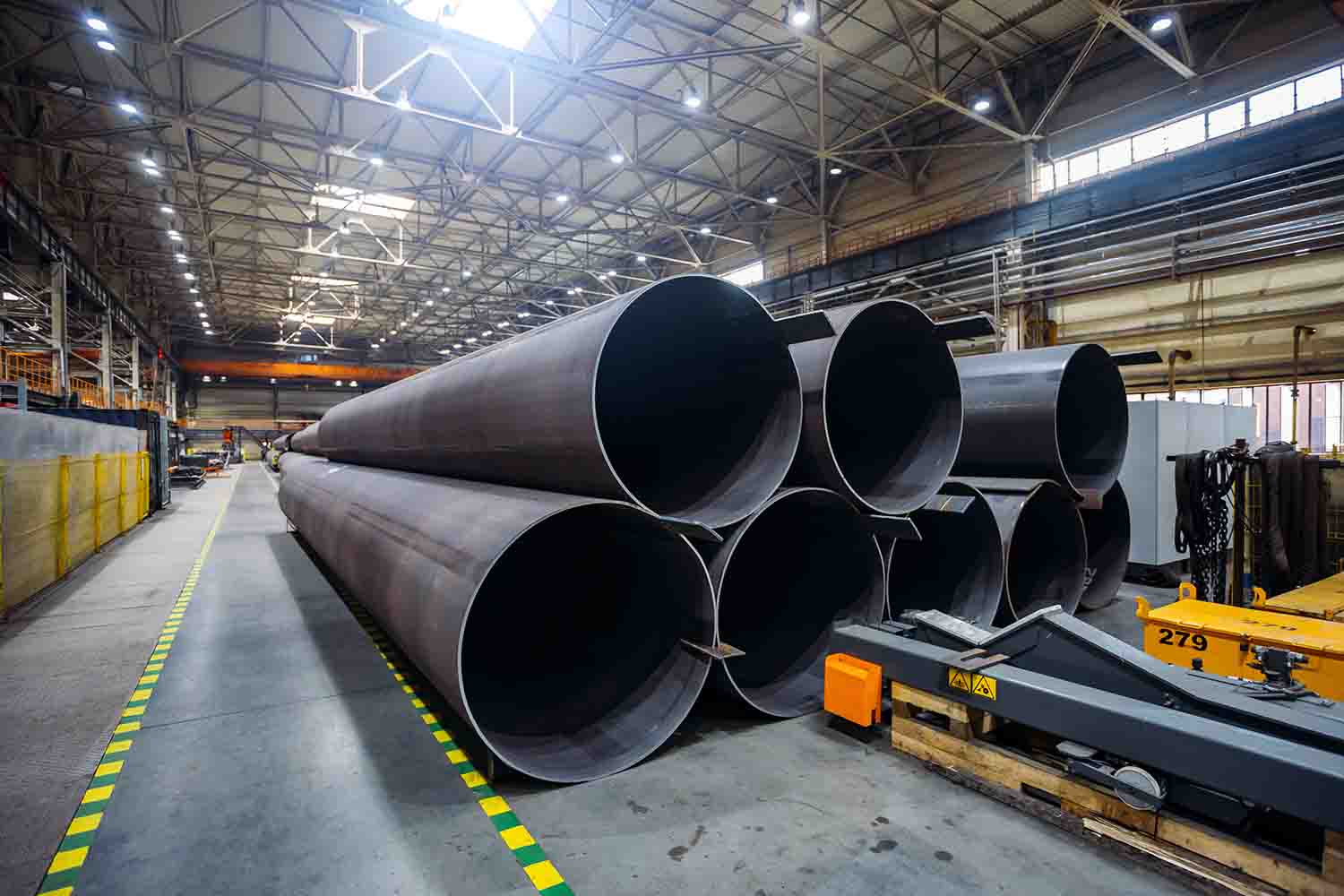Metal Pipelines Unveiled: The 4 Critical Classifications for Global Engineering Projects
2025-06-11 16:36:40 hits:0
Metal pipelines serve as the backbone of industrial infrastructure and construction worldwide. This comprehensive guide dissects their classification across four pivotal dimensions—material types, application fields, medium conditions, and connection methods—integrating international standards and real-world case studies for professional engineering reference.
I. Classification by Material Characteristics
1.1 Ferrous Alloy Pipelines
1.1.1 Carbon Steel Pipelines
Carbon steel pipelines, composed primarily of iron and carbon, are classified by carbon content: low-carbon steel (C≤0.25%), medium-carbon steel (0.25%<C≤0.6%), and high-carbon steel (C>0.6%). Low-carbon grades like ASTM A106 Grade B seamless pipes (ASTM A106 standard) dominate water and steam transportation (≤425℃) in municipal projects across the U.S. and Europe (AWWA standards).
1.1.2 Alloy Steel Pipelines
Alloy steel pipelines incorporate elements like chromium (Cr), molybdenum (Mo), and vanadium (V) for enhanced performance. For instance, ASTM A335 P91 steel (9% Cr, 1% Mo, ASTM A335 standard) withstands 580℃ high-pressure conditions in main steam systems of large power plants in North America and Asia (IEA power sector reports).
1.1.3 Stainless Steel Pipelines
Stainless steel pipelines excel in corrosion resistance and hygiene, complying with ASTM A240 standard:
| Type | Typical Grade | Alloy Features | International Applications |
|---|---|---|---|
| Austenitic SS | 304 (S30400) | 18Cr-8Ni passivation layer | European food & beverage production lines (EU Food Safety Authority) |
| Duplex SS | 2205 (S32205) | Ferritic-austenitic structure | Chloride-containing pipelines in Middle Eastern desalination plants (Desalination.com) |
1.2 Non-Ferrous Metal Pipelines
1.2.1 Copper & Copper Alloy Pipelines
Copper pipelines offer excellent thermal conductivity and corrosion resistance. ASTM B88 TP2 copper pipes (ASTM B88 standard) are widely used in North American and European refrigeration systems, while brass (e.g., C27200) dominates gas transportation in South America and Southeast Asia (International Copper Alliance).
1.2.2 Aluminum & Aluminum Alloy Pipelines
Lightweight and high-strength aluminum pipelines, such as ASTM B241 6061-T6 (ASTM B241 standard), are applied in Australia and the Middle East for lightweight industrial projects like solar power coolant systems (World Bank energy reports).
1.2.3 Titanium & Titanium Alloy Pipelines
Titanium pipelines shine in corrosive environments. ASTM B338 Grade 2 titanium pipes (ASTM B338 standard) are used in Gulf of Mexico offshore platforms and Nordic chemical plants for seawater and strong acid/alkali transportation (Offshore Magazine).
II. Classification by Application Fields
2.1 Industrial Pipelines
Industrial pipelines serve petroleum, chemical, and metallurgical sectors. For example, Middle Eastern and Russian oil networks use API 5L X70 steel (API 5L standard) for long-distance crude transportation, while German and Japanese chemical plants prefer 316L stainless steel for corrosive media (ICCA reports).
2.2 Energy Pipelines
Energy pipelines cover power and new energy fields. Supercritical power plants in Europe and North America employ 9Cr-1Mo steel for high-temperature steam, while LNG terminals in Australia and South Africa use 9% nickel steel (ASTM A353, ASTM A353 standard) for -162℃ cryogenic transport (IRENA case studies).
2.3 Building & Municipal Pipelines
Building pipelines handle internal systems (e.g., CPVC pipes in U.S. and Canadian residences), while municipal pipelines serve urban infrastructure. Cities like London and Tokyo rely on ductile iron pipes (complying with ISO 2531 standard). As a leading ductile iron pipe manufacturer and supplier, Tiegu delivers high-strength, corrosion-resistant solutions for global water supply projects, ensuring infrastructure reliability.

III. Classification by Medium Conditions
3.1 Core Parameters of Medium Conditions
3.2 Classification by Fluid Dynamics
IV. Classification by Connection Methods
4.1 Welding Connections
4.2 Mechanical Connections
This classification framework empowers engineers and project managers to optimize pipeline selection for international projects. For specialized ductile iron pipe solutions or material consultations, visit Tiegu’s official website to explore our global project portfolio.

 en
en  fra
fra  de
de  ru
ru  ara
ara  gle
gle  it
it  jp
jp  kor
kor  th
th  zh
zh 


